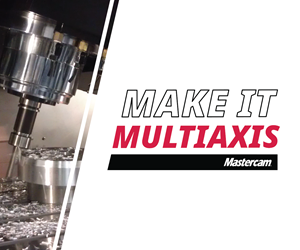U.S. Navy Invests Heavily in Shoring Up Manufacturing Base
As part of its commitment to replace its aging submarine fleet, the U.S. Navy is investing heavily in building America’s manufacturing base, including free education and assisting suppliers in modernizing their facilities.
If you read Modern Machine Shop, you almost certainly know about the dreaded skills gap — the difference between the demand for skilled manufacturers and the number of people capable of filling those roles. We have written numerous times about the value of career and technical education (CTE) for high schools, as well as the need to network existing technical education programs around the country.
While the entire industry recognizes the need for improved manufacturing education, funding for these programs can be tight. Despite the lobbying efforts of numerous manufacturing organizations, federal, state and local governments have been slow to respond. And so the skills gap persists, and it is easy to feel discouraged.
I was personally feeling discouraged when, in a grocery store parking lot, my car radio advertised BuildSubmarines.com — a website that offered listeners the chance to “build a legacy” and “support their country” through manufacturing.
I had questions. Chief among them were, “What?” and “Why submarines?”
After some digging, what I found was a comprehensive effort by the U.S. Navy to train tens of thousands of manufacturers and provide part producers with the guidance and funding to modernize their facilities.
The U.S. Navy vs. the Manufacturing Skills Gap
On September 15, 2021, the United States, United Kingdom and Australia announced AUKUS — a trilateral security partnership between the three countries. At the center of the deal is an agreement to provide modern nuclear submarines to Australia, placing serious strain on the DOD as it attempts to both meet this obligation and update the U.S.’s own aging submarine fleet. To meet these twin goals, the Navy has announced its intention to produce one Columbia-class and two Virginia-class submarines every year, which some have termed the 1+2 Initiative.
Unfortunately for the Navy, the skills gap is a major obstacle to accomplishing this task. To meet its goals, the government believes the industry must achieve a net increase of 100,000 workers in manufacturing — including pipe fitters, welders and CNC machinists. Additionally, the Navy wishes to expand its base of 15,000 suppliers, which means assisting in updating and qualifying more facilities to meet the needs of defense work, even with more stringent cybersecurity goals looming.
In 2022, the Navy founded BlueForge Alliance (BFA) through the Submarine Industrial Base as a nonprofit organization with the singular goal of improving the capacity of U.S. manufacturers to achieve the Navy’s 1+2 goal. The Texas-based nonprofit coordinates with manufacturers, technical schools and industry leaders through three avenues: attracting potential workers to manufacturing, supporting technical education programs and assisting DOD suppliers in meeting the needs of submarine manufacturing through the development and implementation of technology.
For example, BFA assists facilities in meeting the requirements of defense work. This support includes grants to help shops modernize and upgrade equipment, as well as technical support to help manufacturers achieve the necessary standards for defense and naval work. “Our focus is helping the Navy achieve 1+2, and it entails everything we need to do to accomplish this,” says Managing Director of Workforce Development Katherine Dames.
However, some of the most intense efforts revolve around developing manufacturing education programs at no cost to the students.
Full-Steam Ahead on Technical Education
The Accelerated Training in Defense Manufacturing (ATDM) program is a pilot school located in Danville, Virginia, for training students in CNC machining, welding, metrology, additive manufacturing or quality inspection. Its 16-week courses are designed to specifically train students in defense manufacturing, focusing on the standards and common challenges specific to that industry.
The CNC track includes training on Haas controls with a Haas UMC 500SS mill and a Haas ST-20Y lathe. Training includes writing G code, reading blueprints, machining-centered math skills, basic metrology and hands-on experience with machine tools. “We focus on foundational skills of machining that translate across different models of machines and controllers,” says Director of Training and Technology James Hubbard.
Classes also cover soft skills like professionalism, teamwork and communication. “Our goal is for our students to be ready to enter the labor force as soon as they graduate,” says Debbie Fuchs, manager of strategic marketing and communications for the Institute for Advanced Learning and Research, which runs ATDM. These students range from fresh-faced high school graduates to workers looking for a career pivot, as well as veterans looking for civilian employment.
To top it off, this program is functionally the only free post-secondary education funded by the U.S. government.
“Full scholarships are available to qualified students,” Fuchs says. These scholarships include the cost of tuition, travel expenses within Danville and housing costs for four months. “Currently, 100% of our students receive scholarships.” This not only enables low-income and out-of-state students to attend, but also makes the eight-hour school days manageable by eliminating the need to work a side job.
The school works with partner companies that are part of the defense and naval manufacturing base to assist with job placement, ensuring that students can quickly move into well-paying jobs that advance the goal of improving the nation’s defense-manufacturing capacity. While the school is still striving to reach its goal of graduating 800-1,000 students annually, the November graduating class consisted of 93 students, and the next class has 120.
And this is not the only school receiving support through the Navy’s efforts to fulfill its 1+2 mission. BFA has also supported the Navy’s investment in community colleges in California, Maine, Virginia and Pennsylvania, and it has plans to further its support of the industrial educational base. After decades in which technical education has struggled to find funding, the government is finally putting its muscle behind American industry.
And it’s about time. Far from limiting its effects to submarine production, this level of investment in the manufacturing base stands to dramatically improve the competitiveness of U.S. manufacturing across the board. As the Navy surely understands, a rising tide lifts all ships.
Read Next
The Cut Scene: The Finer Details of Large-Format Machining
Small details and features can have an outsized impact on large parts, such as Barbco’s collapsible utility drill head.
Read More3 Mistakes That Cause CNC Programs to Fail
Despite enhancements to manufacturing technology, there are still issues today that can cause programs to fail. These failures can cause lost time, scrapped parts, damaged machines and even injured operators.
Read MoreObscure CNC Features That Can Help (or Hurt) You
You cannot begin to take advantage of an available feature if you do not know it exists. Conversely, you will not know how to avoid CNC features that may be detrimental to your process.
Read More







.png;maxWidth=300;quality=90)












